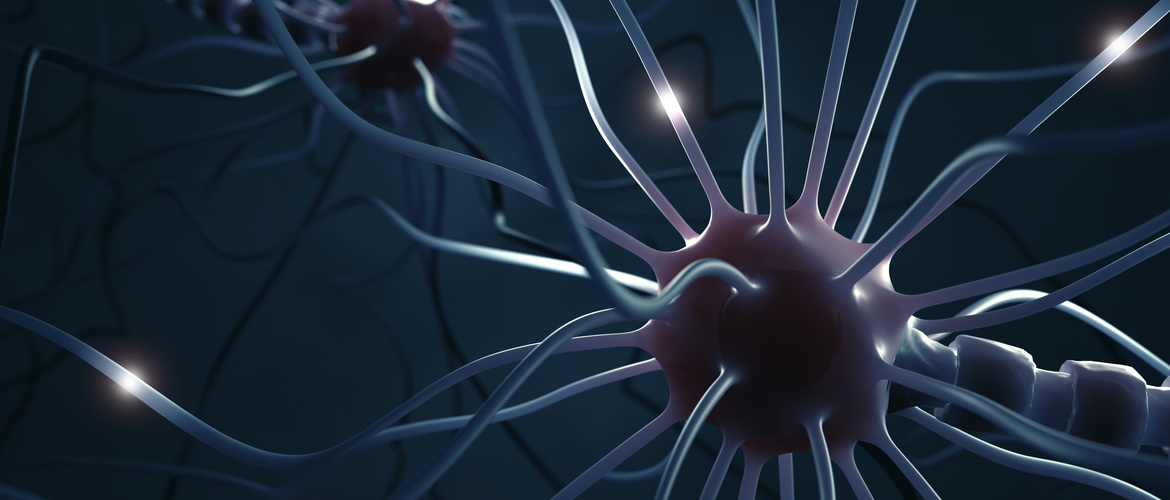
Choose a channel
Check out the different Progress in Mind content channels.

Progress in Mind

Both mitochondrial and lysosomal function decrease with age, which is the major risk factor for PD, and are impaired by gene mutations linked to the disease. Mitochondrial and lysosomal pathways are important and interconnected in pathogenesis. Both encompass the inflammatory factors, calcium dysregulation and excess free radicals that may also be involved.
From an early stage, mitochondria were suggested as an important factor in causing Parkinson’s Disease (PD), and this was at least in part validated by the MPTP story. The Complex 1 component of the mitochondrial respiratory chain is inhibited by an oxidation product of MPTP; and this inhibition leads to the death of dopaminergic neurons.
Exposure to certain pesticides has a similar effect. And, although we have not identified any single environmental agent as a prime contributor to PD (as distinct from Parkinsonism), pesticides cannot escape the cloud of suspicion.1
Most PD patients are similar in their core clinical features, which arise from the basal ganglia where cell death begins, but are otherwise heterogeneous – clinically, and probably also genetically. Free radical excess, inflammatory processes, calcium dysregulation, protein aggregation -- all have been suggested as important elements within the disease pathways involved. But these factors are interconnected, believes Anthony Schapira, of the Institute of Neurology, University College London. For example, mitochrondria are a major source of free radicals.
It is often difficult to distinguish between primary and secondary effects; and the picture is one of complex pathways interacting over time, Professor Schapira continued, speaking at the London event James Parkinson – An Essay on the Shaking Palsy 1817: A Celebration of 200 Years of Progress, organised by the International Parkinson and Movement Disorder Society.
Overall, genetics probably accounts for about 15% of PD – but for a far greater percentage in certain populations such as the Ashkenazi Jewish community, where it is thought that gene mutations are responsible for around 50% of the disease. Kindred studies have shown that rare cases of PD are monogenetic. Others show more complicated gene linkage. But genetics has given us vital insights into relevant pathways.
If gene mutations interfere with turnover, sick mitochondria accumulate -- which damages the cell.
Twenty years ago, alpha-synuclein was identified as a genetic cause: PARK1 was a game-changer. Of the genes we now know are implicated in PD, four (Parkin, PINK1, DJ1 and FBOX7) are involved in mitochondrial turnover, ie the labelling of damaged mitochondria for lysosomal destruction. If gene mutations interfere with turnover, sick mitochondria accumulate -- which damages the cell.
Next in likely importance is the lysosomal autophagy pathway.2 Numerically, homozygous and heterozygous mutations in the glucocerebrosidase beta acid (GBA) gene are the biggest genetic risk factor for PD. In the UK, it is reported that 12% of PD patients have a GBA mutation, and that is probably an underestimate.
Such mutations decrease activity of the enzyme, and the substantia nigra is the area most severely affected. Also of interest is the fact that even in PD patients without GBA mutations, there is still a deficit in substantia nigra GBA activity.
GBA deficiency impairs the autophagy-lysosome pathway and so the disposal of damaged organelles and the handling of macromolecules such as alpha-synuclein, which constitutes the largest component of Lewy bodies.
The most important pathway for degradation of alpha-synuclein is through the lysosome
It is indeed intriguing that the most important pathway for degradation of alpha-synuclein is through the lysosome. But alpha-synuclein inhibits mitochrondrial function and mitochondrial dysfunction leads to dysregulation of cellular calcium which, in turn, affects dopamine. Neuroinflammation also contributes to mitochondrial damage. So we have an overlap between many relevant pathways.
The question now is whether we can use this understanding to identify targets and develop therapies. Much attention has been focused on the GBA gene.
In GBA knock-out mice, levels of alpha-synuclein increase. Use of a GC-ase inhibitor raises levels of alpha-synuclein; and more alpha-synuclein decreases GC-ase activity.
There are now suggestions that increasing levels of GC-ase may decrease levels of alpha-synuclein. One approach is to use drugs that act as GBA chaperones, allowing the mutated protein to be unfolded in readiness for action.3 In principle, increasing GC-ase activity could interfere with several cell death pathways, improving both lysosomal and mitochondrial function, and decreasing the spread of neurodegeneration – if this is indeed caused by alpha-synuclein.
Study of the many causes of cell death is of prime importance in understanding the nature of the disease. But many pathways – both genetic and environmental -- converge on mitochondrial quality control.4
Our correspondent’s highlights from the symposium are meant as a fair representation of the scientific content presented. The views and opinions expressed on this page do not necessarily reflect those of Lundbeck.